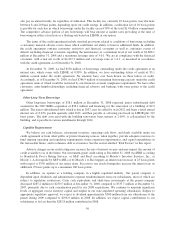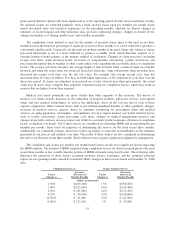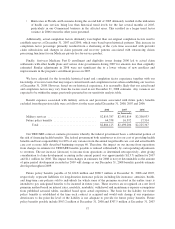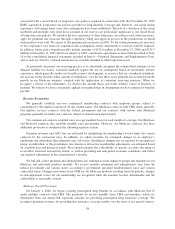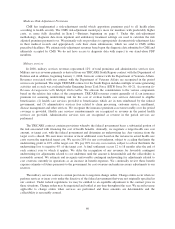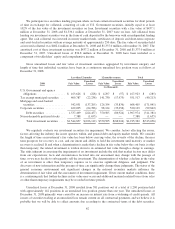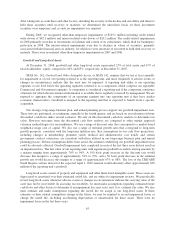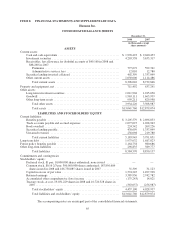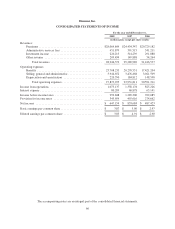Humana 2008 Annual Report Download - page 70
Download and view the complete annual report
Please find page 70 of the 2008 Humana annual report below. You can navigate through the pages in the report by either clicking on the pages listed below, or by using the keyword search tool below to find specific information within the annual report.Medicare Risk-Adjustment Provisions
CMS has implemented a risk-adjustment model which apportions premiums paid to all health plans
according to health severity. The CMS risk-adjustment model pays more for members with predictably higher
costs, as more fully described in Item 1.—Business beginning on page 5. Under this risk-adjustment
methodology, diagnosis data from inpatient and ambulatory treatment settings are used to calculate the risk
adjusted premium payment to us. We primarily rely on providers to appropriately document risk-adjustment data
in their medical records and appropriately code their claim submissions, which we send to CMS within
prescribed deadlines. We estimate risk-adjustment revenues based upon the diagnosis data submitted to CMS and
ultimately accepted by CMS. We do not have access to diagnosis data with respect to our stand-alone PDP
members.
Military services
In 2008, military services revenues represented 12% of total premiums and administrative services fees.
Military services revenue primarily is derived from our TRICARE South Region contract with the Department of
Defense and in addition, beginning January 1, 2008, from our contract with the Department of Veterans Affairs.
Revenues associated with our contract with the Department of Veterans Affairs are recognized in the period
services are performed. The single TRICARE contract for the South Region includes multiple revenue generating
activities and as such was evaluated under Emerging Issues Task Force (EITF) Issue No. 00-21, Accounting for
Revenue Arrangements with Multiple Deliverables. We allocate the consideration to the various components
based on the relative fair values of the components. TRICARE revenues consist generally of (1) an insurance
premium for assuming underwriting risk for the cost of civilian health care services delivered to eligible
beneficiaries; (2) health care services provided to beneficiaries which are in turn reimbursed by the federal
government; and (3) administrative services fees related to claim processing, customer service, enrollment,
disease management and other services. We recognize the insurance premium as revenue ratably over the period
coverage is provided. Health care services reimbursements are recognized as revenue in the period health
services are provided. Administrative services fees are recognized as revenue in the period services are
performed.
The TRICARE contract contains provisions whereby the federal government bears a substantial portion of
the risk associated with financing the cost of health benefits. Annually, we negotiate a target health care cost
amount, or target cost, with the federal government and determine an underwriting fee. Any variance from the
target cost is shared. We earn more revenue or incur additional costs based on the variance in actual health care
costs versus the negotiated target cost. We receive 20% for any cost underrun, subject to a ceiling that limits the
underwriting profit to 10% of the target cost. We pay 20% for any cost overrun, subject to a floor that limits the
underwriting loss to negative 4% of the target cost. A final settlement occurs 12 to 18 months after the end of
each contract year to which it applies. We defer the recognition of any revenues for favorable contingent
underwriting fee adjustments related to cost underruns until the amount is determinable and the collectibility is
reasonably assured. We estimate and recognize unfavorable contingent underwriting fee adjustments related to
cost overruns currently in operations as an increase in benefit expenses. We continually review these benefit
expense estimates of future payments to the government for cost overruns and make necessary adjustments to our
reserves.
The military services contracts contain provisions to negotiate change orders. Change orders occur when we
perform services or incur costs under the directive of the federal government that were not originally specified in
our contract. Under federal regulations we may be entitled to an equitable adjustment to the contract price in
these situations. Change orders may be negotiated and settled at any time throughout the year. We record revenue
applicable to change orders when services are performed and these amounts are determinable and the
collectibility is reasonably assured.
60


